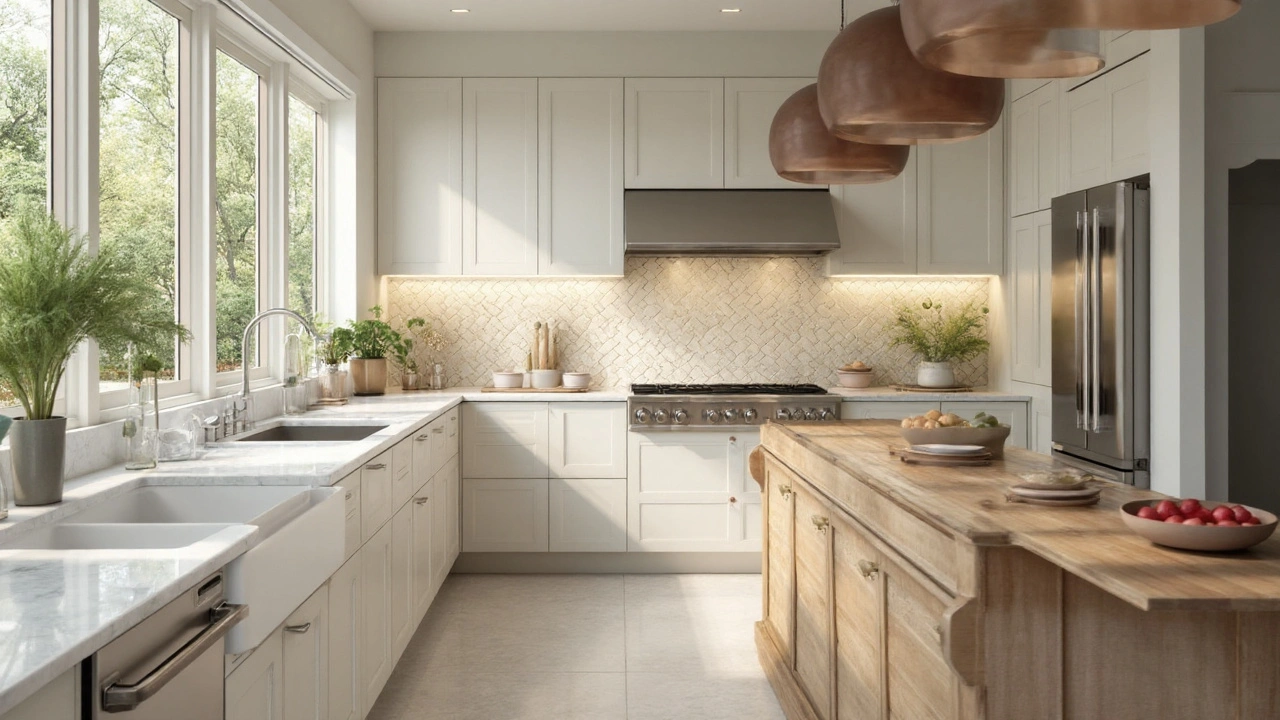Slip-Resistant Flooring: Keep Your Home Safe and Stylish
Ever stepped onto a wet bathroom floor and felt that scary slip? You’re not alone. Slip‑resistant flooring is the quiet hero that stops those scary moments without ruining the look of your space. Below you’ll learn how it works, which materials fit best in each room, and a few quick tips to nail the right choice for your home.
How Slip-Resistant Flooring Works
All slip‑resistant floors have a textured surface or a special coating that creates grip. The texture can be tiny bumps, etched patterns, or a rubber‑like layer. When water, oil, or dust is on the floor, the tiny gaps give your shoes something to catch on, so you don’t slide. Some products also use a chemical treatment that stays active for years, keeping the surface slick‑free even after heavy wear.
Because the grip comes from the surface, the material underneath can be anything—from wood to tile to vinyl. That means you can have a floor that looks like hardwood but still feels safe underfoot. The key is choosing a product that meets the ASTM slip rating or the R rating you need for the room. Higher‑traffic areas like kitchens usually need a higher rating than a living room.
Choosing the Right Material for Each Room
Bathrooms: Ceramic or porcelain tile with a matte finish works great. Look for tiles that are labeled “anti‑slip” or have a slip‑resistance rating of at least R9. If you love the look of wood, consider engineered wood with a textured surface—you’ll get the warm vibe without the hazard.
Kitchens: Vinyl plank flooring is popular because it’s water‑resistant and often comes with a slip‑resistant coating. For a more upscale feel, choose stone tiles that have been honed rather than polished; honed stone provides the grip you need while still looking sleek.
Outdoor Areas: Deck boards with a built-in roughness or a non‑slip paint are perfect for patios and pool decks. Rubber decking is another solid option—it’s soft underfoot, drains water quickly, and never gets slippery.
Basements and Laundry Rooms: These spots see a lot of moisture. Epoxy floor coatings with anti‑slip aggregates are durable and easy to clean. They also resist mold, which is a bonus in damp spaces.
When you shop, ask the retailer for the slip‑rating chart. If you can’t find it, a quick online search of the product name plus “slip rating” usually turns up the info you need.
Installation matters, too. Even the best slip‑resistant floor can become slick if it’s installed on a wet surface or if the joints aren’t sealed properly. Follow the manufacturer’s instructions, or hire a professional who knows how to get a level, dry base before laying the floor.
Finally, maintain the surface. Sweep or vacuum regularly, mop with a pH‑neutral cleaner, and avoid harsh chemicals that can wear down the texture. A quick rinse after a spill keeps the grip intact and extends the life of your floor.
Slip‑resistant flooring isn’t just for safety geeks—anyone who wants a worry‑free home can benefit. Pick the right material for each room, check the slip rating, and keep it clean. You’ll walk around with confidence, and your floors will still look great.

What Is Ghost Tile? A Practical Guide to This Invisible Flooring Trend
Discover what ghost tile is, how it differs from traditional tiles, its installation, design benefits, maintenance tips, and when to choose it for your home.
view more